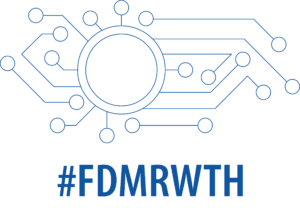
Source: Unsplash
Research data are the raw material of research work and thus decisive for scientific progress. In order to derive the greatest possible benefit from the data, its accessibility and reusability is essential. They should therefore never be stored on a USB stick and disappear in a private drawer.
Benefits of Data Publication
By publishing data and citing it, research results become more visible. This benefits the academic reputation.
In addition, other researchers have the opportunity to take a look at the data and see if it adds value to their own study. Thus, research results can become more profitable through integration and re-analysis. It may even lead to new collaborations.
Another crucial reason for more data openness are meta-analyses. In some disciplines, significant analytical errors of established methods or tools have only been detected because meta-analyses revealed inconsistencies across many study data. Such analysis errors are not always noticeable in a single study, but they can produce false results and thereby invalidate the entire study. Meta-analyses can avoid this.
Where do you publish research data?
Data and publications can be archived in research data repositories and published through these. For RWTH research data, for example, the institutional repository RWTH Publications can be used. In recent years, a large number of different, also subject-specific repositories have come together. Depending on the subject area, the selection can be very large and confusing.
The site re3data can help. It is an internationally recognised reference tool that provides an overview of existing research data repositories. Icons show which features the platforms have. It is also possible to filter by desired characteristics (e.g. open access).
Decision-making difficulties?
Quality criteria such as certificates can make the decision for or against a repository much easier. The certificates give the data creators the security that the data can be found, used and cited in long-term.
Certificates for repositories are awarded by by various initiatives based on different criteria. The CoreTrustSeal and the nestor Seal, for example, are proven seals that apply high quality criteria.
Publication in a Data Journal
Another publication option is to publish research data in data journals. Data journals do not require a scientific interpretation of the data, but a detailed description of the data in the form of a paper or a data curation profile. The data set is deposited in a repository and the article in the journal refers to the respective data set.
Learn more
Further tips and information on the topic can be found in the instructional video Research Data to Publications. You can also read the instructions for publishing research data on RWTH Publications.
If you have any further questions about data publication or research data management in general, simply contact the ServiceDesk. The RDM Team looks forward to hearing from you.
______
Responsible for the content of this article is Sophia Nosthoff.





Leave a Reply
You must be logged in to post a comment.